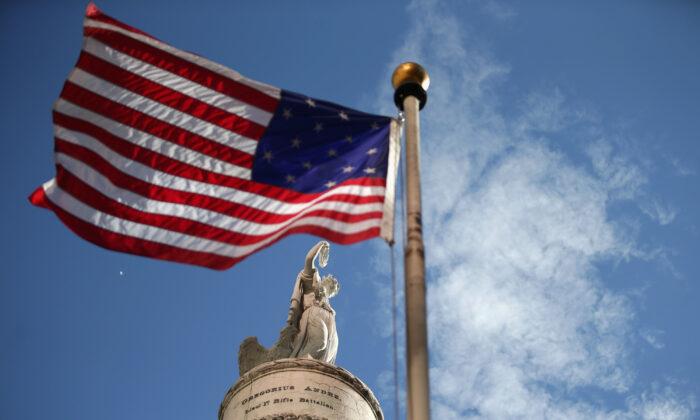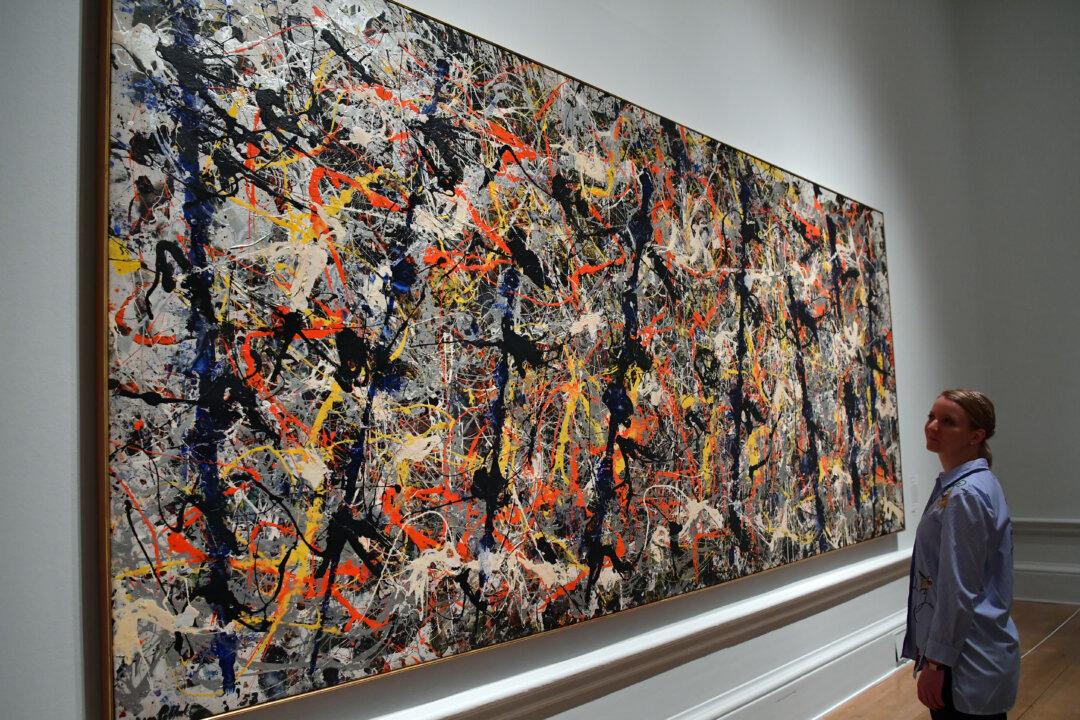“Enjoy the long weekend.”
As many commentators pointed out, you wouldn’t know that she had Memorial Day in mind, because her tweet didn’t mention the name of the holiday. For her, it was just another long weekend, another opportunity for the sheep to graze unherded for an extra day while waiting to be shorn.
Doubtless, she is kicking herself, or at any rate, the aide who suggested she issue the tweet—not, of course, because of the omission but because of the minor PR blowback it occasioned.
The sheep may be docile but they are also touchy and unpredictable.
Probably no one Harris consorts with ever gives Memorial Day a second thought.
Why should they? It’s a holiday that commemorates something they despise—many things, in fact: the spirit of personal sacrifice and duty, on the one hand, and the country for which those exertions were expended, on the other.
Harris gave that project a little nudge a day or two later when, noting the unhappiness, she issued a compensatory tweet that did mention the holiday.
That snuffling noise you hear is the sound of cynics reacting to her second tweet.
In any event, the fracas did put me in mind of a family outing to Maryland over Memorial Day weekend several years ago.
Fort McHenry
Together with my wife and 5-year-old son, I stopped at Baltimore Harbor to see Fort McHenry, the site, in September 1814, of the Battle of Baltimore, a decisive episode in the War of 1812.It was a glorious spring day: the sky was an infinite azure punctuated by a flotilla of stately white clouds.
Our first stop was a modern outbuilding adjacent to the 18th-century fort. We crowded into a small theater with about 30 fourth-graders and their teachers to watch a short film.
Among other things, we learned about the origins of the war, about how the British took and burned Washington, about how at last 1,000 U.S. troops under George Armistead at Fort McHenry successfully defended their bastion against the British naval onslaught, saving Baltimore and turning the tide of the war.
It was (as the Duke of Wellington said of Waterloo) “the nearest run thing you ever saw.”
The British ships, anchored out of range of Armistead’s cannons, pounded the fort with mortar and Congreve rocket fire over the course of 25 hours.
Sitting on a truce ship behind the British fleet was a young American lawyer and amateur poet named Francis Scott Key. He watched as the battle raged, dappling the night sky with noisy coruscations.
Sometime before sunrise, the bombardment suddenly stopped. Key was uncertain of the battle’s outcome until dawn broke and he saw the American flag fluttering boldly above Fort McHenry. (When he had taken command, Armistead asked for an extra-large flag so that “the British would have no trouble seeing it from a distance.”)
There would be no surrender.
The Brits abandoned their plans to invade Baltimore. The war would soon be over.
As soon as he caught sight of Old Glory, Key began scribbling what would become “The Star-Spangled Banner” on the back of a letter. He finished it in a hotel in Baltimore a day or two later.
The poem was an instant hit and was soon set to “The Anacreontic Song,” an 18th-century English drinking tune. It became the official national anthem in 1931.
The film ended and strains of the song began floating out from the loudspeakers—softly at first, then louder and louder. Everyone in the room scrambled to his feet.
“O say, does that star-spangled banner yet wave O’er the land of the free and the home of the brave”
The schoolchildren stood reverently, each with his right hand over his heart. A floor-length curtain wheeled back, flooding the room with light.
American Identity
Of course, that calculated piece of theater was in part an exercise in sentimentality. Is that a bad thing? Wallace Stevens may have been right that, in general, “sentimentality is a failure of feeling”—a sign of counterfeit emotion rather than the real thing.Nevertheless, there is a place for a bit of affirmative sentimentality in the moral economy of our society.
Among other things, it provides emotional glue for our shared identity as Americans.
These days, perhaps more than ever before, that identity needs glue. As we contemplate the prospects for America and its institutions in the 21st century, it isn’t only particular cultural and social institutions that deserve scrutiny.
What we might call the institution of American identity—of who we are as a people—also requires our attention.
It’s often said that the terrorist attacks of 9/11 precipitated a new resolve throughout the nation.
There is some truth to that.
Certainly, the extraordinary bravery of the firefighters and other rescue personnel in New York and Washington provided an invigorating spectacle—as did Todd “Let’s Roll” Beamer and his fellow passengers on United Airlines Flight 93.
Having learned from their cellphones what had happened at the World Trade Center and the Pentagon, they rushed and overpowered the terrorists who had hijacked their plane.
As a result, the plane crashed on a remote Pennsylvania farm instead of on Pennsylvania Avenue. Who knows how many lives their sacrifice saved?
The widespread sense of condign outrage—of horror leavened by anger and elevated by resolve—testified to a renewed sense of national purpose and identity after 9/11.
At one time, American flags flew in front of a U.S. post office and a liquor store.
At some point, the post office stopped displaying the flag, so on Sept. 11, 2001, the flag flew only in front of the liquor store.
Within two weeks, 17 American flags decorated that block of Charles Street, in addition to a huge flag suspended over the street close by.
“With their country under attack,” Huntington notes, “Charles Street denizens rediscovered their nation and identified themselves with it.”
Was that rediscovery anything more than a momentary passion? Huntington reports that within a few months, the flags on Charles Street began to disappear. By the time the first anniversary rolled around in September 2002, only four were left flying.
True, that is four times more than were there on Sept. 10, 2001, but it’s less than a quarter of the number that populated Charles Street at the end of September 2001.
There are similar anecdotes from around the country—an excess of flag-waving followed by a relapse into indifference.
Does it mean that the sudden upsurge of patriotism in the weeks following 9/11 was only, as it were, skin-deep?
Or perhaps it merely testifies to the fact that a sense of permanent emergency is difficult to maintain, especially in the absence of fresh attacks?
Is our sense of ourselves as Americans potent only when challenged?
“Does it,” Huntington asks, “take an Osama bin Laden ... to make us realize that we are Americans? If we do not experience recurring destructive attacks, will we return to the fragmentation and eroded Americanism before September 11?”
Cultural Dissolution
I am writing on Memorial Day 2021, just a few months before the 20th anniversary of 9/11.The behavior of those school children at Fort McHenry—behavior that was, I am happy to report, quietly encouraged by their teachers—suggests that the answer cannot simply be no.
But I fear that for every schoolchild standing at attention for the National Anthem, there is a teacher or lawyer or judge or politician, a Black Lives Matter spokesman, ACLU employee, or critical race theorist militating against the “hegemony of the dominant culture,” the insupportable intrusion of white, Christian, “Eurocentric” values into the curriculum, the school pageant, the town green, etc., etc.
The demonstration of national character and resolve following Sept. 11 was extraordinary.
It didn’t, however, purchase immunity from the virus of cultural dissolution advanced by an elite more taken with the woke imperatives of the 1619 Project—now incorporated in the curricula of some 4,500 schools—than lessons of 1776.
The sobering truth is that the display of national heroism and resolve following 9/11 has had little if any effect on the forces behind the fragmentation and “eroded Americanism” to which Huntington refers.
Those forces aren’t isolated phenomena; they aren’t even confined to America.
On the contrary, they are part of a global crisis in national identity, coefficients of the sudden collapse of self-confidence in the West—a collapse that shows itself in everything from swiftly falling birthrates to the attack on the whole idea of the sovereign nation-state.
It’s hard to avoid thinking that a people that has lost the will to reproduce or govern itself is a people on the road to destruction.
Which is one of many reasons we should look askance at the vice president of the United States telling us to “enjoy the long weekend” when she should have paid some homage to the men and women whose sacrifice made her little bubble of affluent privilege possible.





